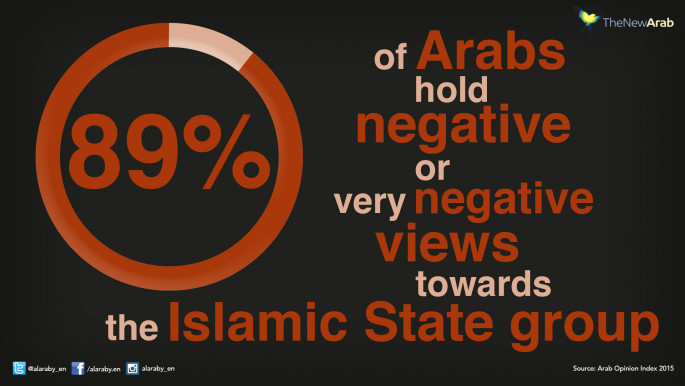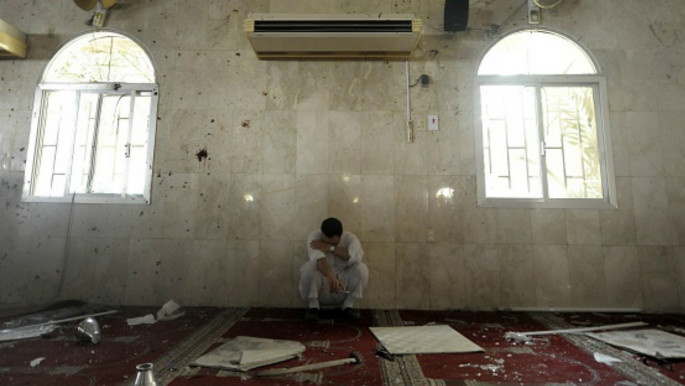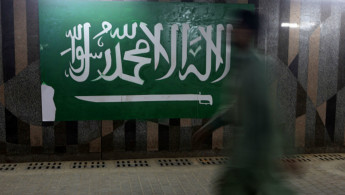Militants' return heralds 'new terrorism era' in Saudi Arabia
The statement, by brigadier Bassam Atiyyah, came during the announcement of the arrest of highly-wanted militant Oqab al-Otaibi, following reports of a deadly firefight in the southeastern province of Bisha between Saudi security services and militants involving cars rigged with explosives and suicide-belts on Friday.
Otaibi, who was accused by the interior ministry of holding "takfiri" thinking, was also involved in plots targeting Saudi Arabia's Shia community, according to the interior ministry.
But the statement concerning the persistence of terrorist activities, numbering 30 in the last year alone, has brought to the fore a seemingly heightening rumble of terror attacks in the kingdom by Saudi citizens returning from Iraq and Syria, as well as by those released after "reform" in so-called"deradicalisation" facilities.
 |
Between 2003 and 2006 particularly, a wave of militant attacks led the Saudi government to initiate significant counter-terrorism measures |  |
The end of the AQAP phase
Between 2003 and 2006 particularly, a wave of militant attacks led the Saudi government to initiate significant counter-terrorism measures, introduced notably by current heir to the throne Mohammad bin Nayef.
While major incidents within the Kingdom predated the 9/11 attacks, including the seizure of the Holy precinct in Mecca in 1979 by militants as well as the bombing of the Khobar Towers in 1996 blamed by Saudi Arabia and the US on Iranian operatives, the rise of al-Qaeda to prominence after September 11 ushered in this new phase of militancy within the Kingdom.
 |
| Click to enlarge |
An intense period of terrorist activity exploded after 2003 led by by al-Qaeda operatives, notably those of al-Qaeda in the Arabian Peninsula [AQAP] and others like-minded, and saw a wave of assaults against a variety of targets across the kingdom especially focused on foreign expatriates.
In May 2003, suicide bombings of expatriate compounds in Riyadh left more than 35 killed and 200 wounded. Over the next seven months a steady series of assaults by militants targeted both expatriates and Saudi security officials.
 |
Terrorist attacks in Saudi Arabia currently stand at a rate of one every 12 days |  |
 |
|
The aftermath of a blast inside a Shia mosque in the Saudi coastal town of Qatif killed four people in May 2015 [Getty] |
Another compound bombing at the end of that year, killing 17 Arab nationals in Riyadh, served as an ominous foreshadowing of events over the next three years.
Between 2004 and 2006, militant attacks continued to target foreign nationals and security services.
Expatriates were often taken as easy targets by the militants who oscillated between small and large scale assaults, including that against staff from a Texas-based petrochemical company in Yanbu in May 2004 which killed 7, and the 29 May assault against expatriate compounds which killed 22 and injured 25.
Militants also launched a long list of attacks on foreign individuals, including those against a German chef browsing a bookstore and that against BBC correspondent Frank Garder on 6 June, which led to his paralysis and the killing of his cameraman.
The assault against the US consulate in Jeddah in 6 December 2004 followed by more car bombs in Riyadh highlighted the militants' strategy when not targeting expatriates to attack Saudi security officers instead.
Throughout this period, counter-terrorism measures by Saudi security services saw significant arrests and killings of militants.
The April 2005 killing of Saleh al-Aufi, leader of AQAP, marked a heightening of Saudi counter-terrorism efforts and the beginning of the end for the militants' phase.
But over this period, lists of wanted people issued regularly by the interior ministry were overwhelmingly composed of Saudi citizens.
 |
Lists of wanted people issued regularly by the interior ministry were overwhelmingly composed of Saudi citizens |  |
Many when arrested however claimed adherence to religious rulings and injuctions.
Relationship between the official theological creed based on the teachings of 18th scholar Mohammad ibn Abd al-Wahhab, as currently taught in Saudi Arabia's religious schools and universities, and that between al-Qaeda and Islamic State [IS] group militants have been a subject of controversy.
Critics of the Saudi regime long accused the kingdom of fostering religious extremist doctrine based on their own puritanical theology, through funding and mosque-building programmes that they say have resulted in ideologies of groups including al-Qaeda, the Taliban and IS militants.
The Saudis counter however by claiming that the militants who declare adherence to this doctrine are extremist heretics who have deviated from the orthodoxy, often labelling them by the pejorative "Kharijities," in reference to a noted violent rogue group in the early centuries of Islam.
From 2006, the Saudis simultaneously embarked on a "carrot and stick" policy wherein amnesties where granted and "de-radicalisation" programs were instituted in the country's prisons.
 |
From 2006, the Saudis simultaneously embarked on a carrot and stick policy wherein amnesties where granted and 'de-radicalisation' programs were instituted in the country's prisons |  |
The shakiness of the policy was perhaps most spectacularly highlighted when in 2009 a militant granted amnesty attempted to assassinate now crown-prince Mohammad bin Nayef.
The return of militancy
The "carrot and stick" seemed to have worked, with a major reduction in terrorist activities between 2006 and 2012 and with AQAP moving its focus to continuously destabilising Yemen.
However, events in Syria after 2011, which saw daily-news updates of massacres of Syria's Sunni population by Assad's Alawi-dominated regime, ignited a new generation of Saudi militants to Syria. A number however joined both the al-Qaeda affiliated al-Nusra Front and IS.
Some have now made their return initiating a new phase of militancy inside the Saudi Kingdom, often directed by IS-group leaders in Syria and Iraq.
The focus of this new phase is distinct, with attacks focusing on the Shia minority as well as remote regions of the kingdom.
 |
The focus of this new phase is distinct, with attacks focusing on the Shia minority as well as remote regions of the kingdom |  |
Suicide bombings and armed attacks against Shia mosques in May 2015 have seen dozens killed and many injured over the past year.
New attacks in January 2016 again threatened to ignite sectarian strife and stability in a region already rocked by protests.
Meanwhile, attacks over the past 12 months against state officials, security officers and armed installations have also escalated.
Despite counter-terrorist crackdowns, including mass-arrests and executions, the rumble of militancy has heightened.
 |
Despite counter-terrorist crackdowns, including mass-arrests and executions, the rumble of militancy has heightened |  |
A steady stream of reports on assaults against police-check points and security services, notably against the Special Forces installation in the southern region's Abha last year.
They have further involved one-off kidnappings and assassinations, including the capture and execution of a emergency services offer that prompted the kingdom to offer a major bounty for the capture of the IS-militants accused.
This weekend's attacks have highlighted the amnesty and de-radicalisation program may be tottering.
Concerning Friday's firefight, the interior ministry said Otaibi had been arrested as far back as eight years prior for planning to join militants in Iraq in 2008, but proceeded to go to Syria in 2013 where he eventually joined IS group before returning to Saudi Arabia, with instructions from IS-leaders to foster terror activities in his home country.
With more than 800 militants said to have now returned to Saudi Arabia from Syria and Iraq, the kingdom may be expecting yet another new phase.


![President Pezeshkian has denounced Israel's attacks on Lebanon [Getty]](/sites/default/files/styles/image_684x385/public/2173482924.jpeg?h=a5f2f23a&itok=q3evVtko)



 Follow the Middle East's top stories in English at The New Arab on Google News
Follow the Middle East's top stories in English at The New Arab on Google News


